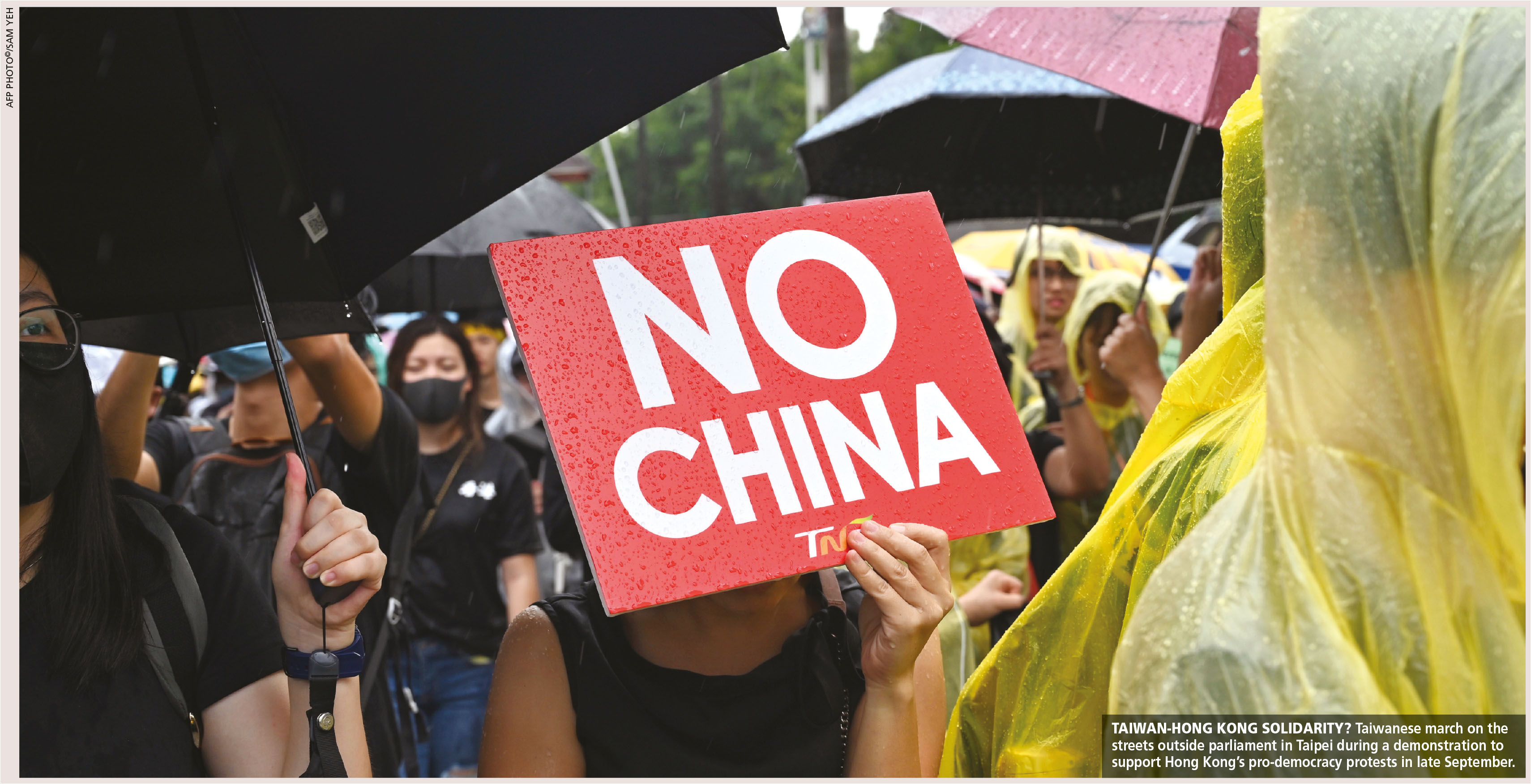TAIWAN INDEPENDENCE
ONE COUNTRY TWO SYSTEMS?
Saro Thiruppathy reports on the opposition that China is facing from both Taiwan and Hong Kong
On 11 January, the 15th presidential election was held in the Republic of China – also known to many as Taiwan – and the incumbent President Tsai Ing-wen and her running mate former Prime Minister William Lai won the mandate to govern.
Tsai of the Democratic Progressive Party (DPP) secured 57 percent of the ballot, which was well ahead of her rival Han Kuo-yu of the Kuomintang of China (KMT) – a.k.a. the Chinese Nationalist Party (CNP).
KMT originally ruled China from 1927 to 1948 before moving to Taiwan and doing likewise until 2000. The DPP favours independence while the KMT prefers reunification with China. And of course, China wants Taiwan back and considers it a breakaway province, which it will take back even by force if necessary.
But Taiwan claims it’s a sovereign state and not a Chinese province. It has its own constitution, a democratically elected government and an armed force with about 300,000 active troops. And the US is providing military aid to Taipei.
TAIWAN’S HISTORY To understand the present, one has to revisit history. Originally it was the Austronesian tribal people from southern China who are said to have settled in Taiwan and in 329 AD, the mainland sent an expedition to explore the island. It’s this exploration that Beijing is using to back its territorial claim today and justify its ‘One-China’ policy in Taiwan.
Taiwan was administered by China’s Qing dynasty from 1683 to 1895. Later, Chinese migrants from the provinces of Fujian and Guangdong began arriving in Taiwan. These two groups form the largest population on the island today.
Following Japan’s victory in the First Sino-Japanese War of 1894/5, China ceded Taiwan to the victors. After World War II, the Republic of China (ROC) began ruling Taiwan with the consent of the Allies, following Japan’s surrender. In 1949, the leader of the ROC – Chiang Kai-shek – fled to Taiwan when Mao Zedong took control of what’s now known as the People’s Republic of China (PRC).
Chiang and his KMT government who were referred to as ‘Mainland Chinese’ dominated Taiwan’s political arena for decades even though they accounted for only 14 percent of the population.
In fact, the ROC represented China at the United Nations Security Council until the UN handed Beijing diplomatic recognition in 1971. As a result, most other countries followed suit and only a handful now recognise Taiwan as a diplomatic entity.
FOR INDEPENDENCE Due to resistance by the local Taiwanese who opposed authoritarian rule and the massacre of protesters in February 1947, Chiang’s son Chiang Ching-kuo began easing up on the dictatorship he’d inherited. He allowed the process of democratisation that eventually ended with the 2000 election of Taiwan’s first non-KMT president – Chen Shui-bian of the DPP.
Relations between Taipei and Beijing slowly began to thaw in the 1980s but when China proposed a ‘one country, two systems’ formula, Taiwan rejected it.
Nevertheless, Taipei relaxed its rules on visits and investments in China, and formally declared that the war with the PRC had ended. While China did engage in unofficial talks with Taiwan, Beijing maintained that the government in Taipei was illegitimate and therefore, it couldn’t consider any high-level contact.
Beijing was upset when Taiwan elected President Chen in 2000 because he had openly supported independence from mainland China. When Chen was reelected in 2004, China promptly passed an anti-secession law in 2005 and claimed it had the right to use ‘non-peaceful means’ against the island if Taiwan attempted to secede.
However, when KMT’s Ma Ying-jeou was elected president in 2008, he worked to establish economic ties with Beijing and improve strained relations.
In 2016, Tsai Ing-wen of the DPP defeated the KMT candidate for the presidency. And by 2018, China was arm-twisting international companies to list Taiwan as a part of China on the internet, and threatened to bar them from doing business on the mainland if they didn’t comply.
FAILED PRINCIPLE Due to the failure of the ‘one country, two systems’ principle in Hong Kong, Taiwan is unwilling to consider it. However, in spite of being heavily supported by the US, Taipei isn’t willing to poke the bear and hopes that Beijing will honour the choice of the Taiwanese people for independence.
China periodically displays its power through military drills in the region, hoping that it will convince Taipei that the future of the island lies with the mainland. Meanwhile, Tsai is trying to wean Taipei away from economic dependence on China by encouraging tourism and inviting Taiwanese businesses to invest in the country rather than in the mainland.
Currently, Hongkongers are expressing their dissatisfaction with aspects of the ‘one country, two systems’ principle through a range of street protests that have on occasion turned violent. They are putting pressure on Beijing to stop its heavy-handed interference in the internal affairs of Hong Kong and want the ‘two systems’ principle to apply in the real sense.
This opposition by Taiwan and Hong Kong, to President Xi Jinping’s vision of a strong and unified nation, is irking Beijing; and it continues to be belligerent to both countries since their demands are considered the antithesis to China’s plans for hegemony in the region.






Leave a comment